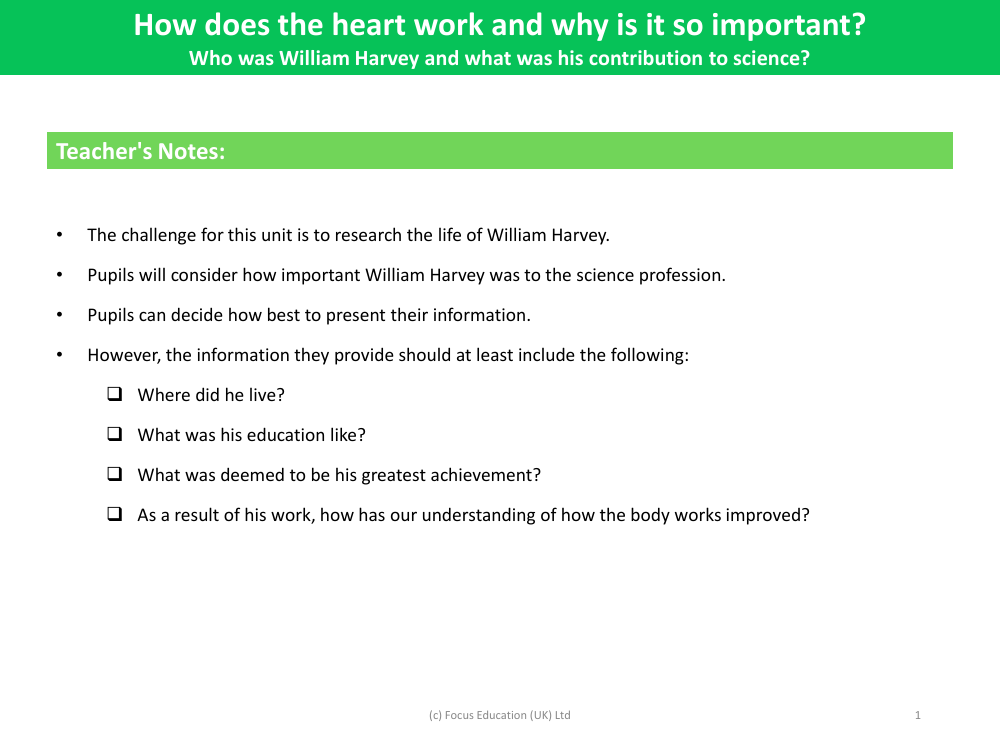Who was William Harvey and what was his contribution to science? - Teacher notes

Science Resource Description
William Harvey was a seminal figure in the history of medicine and made groundbreaking contributions to the understanding of human anatomy and physiology. He was born in England and spent much of his life there, contributing significantly to the scientific community. Harvey's education was extensive; he studied at the University of Cambridge before travelling to Italy to study medicine at the University of Padua, which was one of the leading medical schools of the time. It was here that he was exposed to the work of great anatomists, which would later influence his own discoveries.
Harvey's greatest achievement is widely considered to be his discovery of the circulatory system and the role of the heart in pumping blood throughout the body. Prior to his work, the prevailing theories on circulation were based on misconceptions that dated back to the ancient Greeks. Harvey's meticulous research and observations led him to realise that the heart acted as a pump to circulate blood through a closed system of veins and arteries. This revelation dramatically improved the scientific community's understanding of the human body and how it functions. His work laid the foundation for modern physiology and has had a lasting impact on both the science profession and medical practice. Understanding the heart's function was pivotal not only for physiology but also for the advancement of clinical medicine and surgery.


